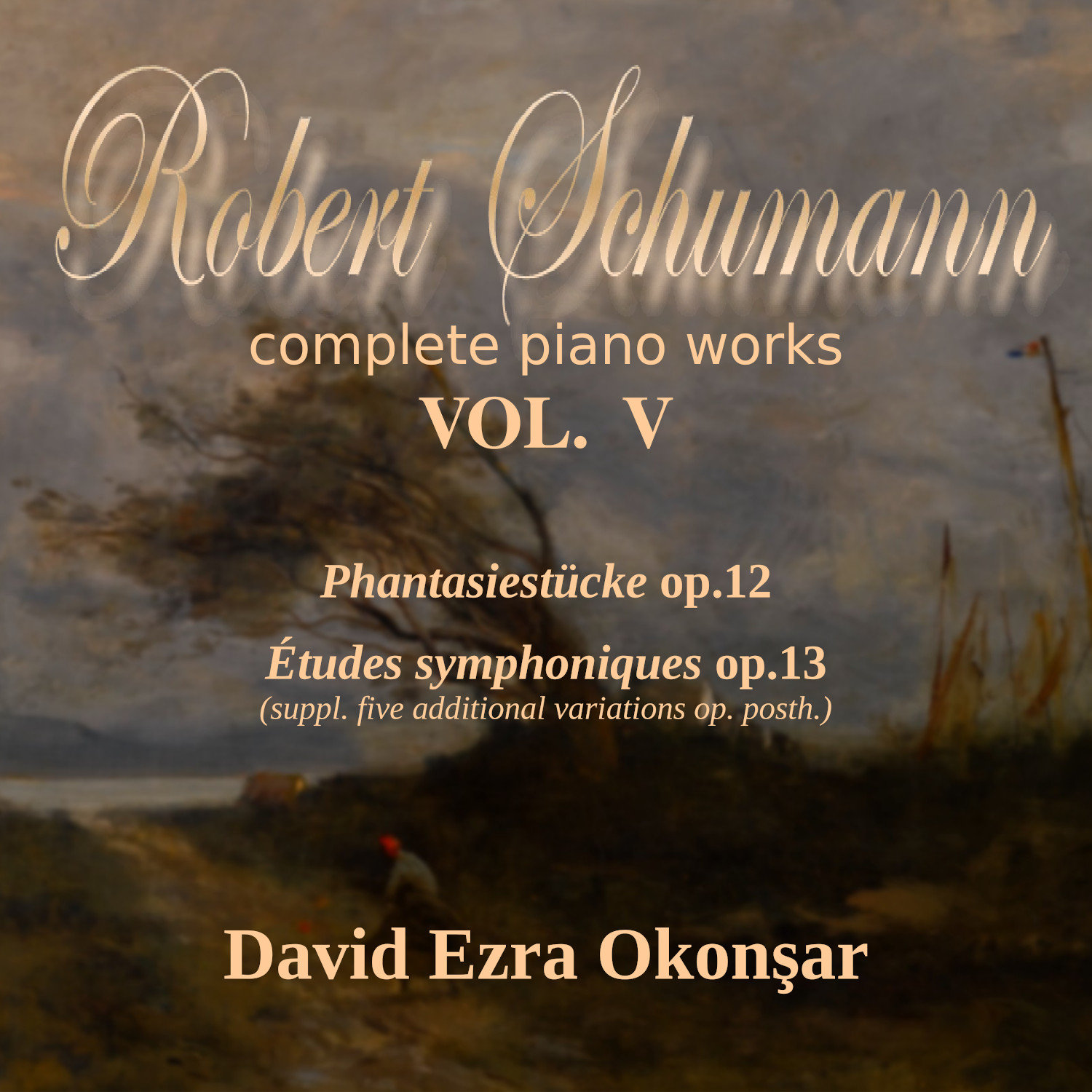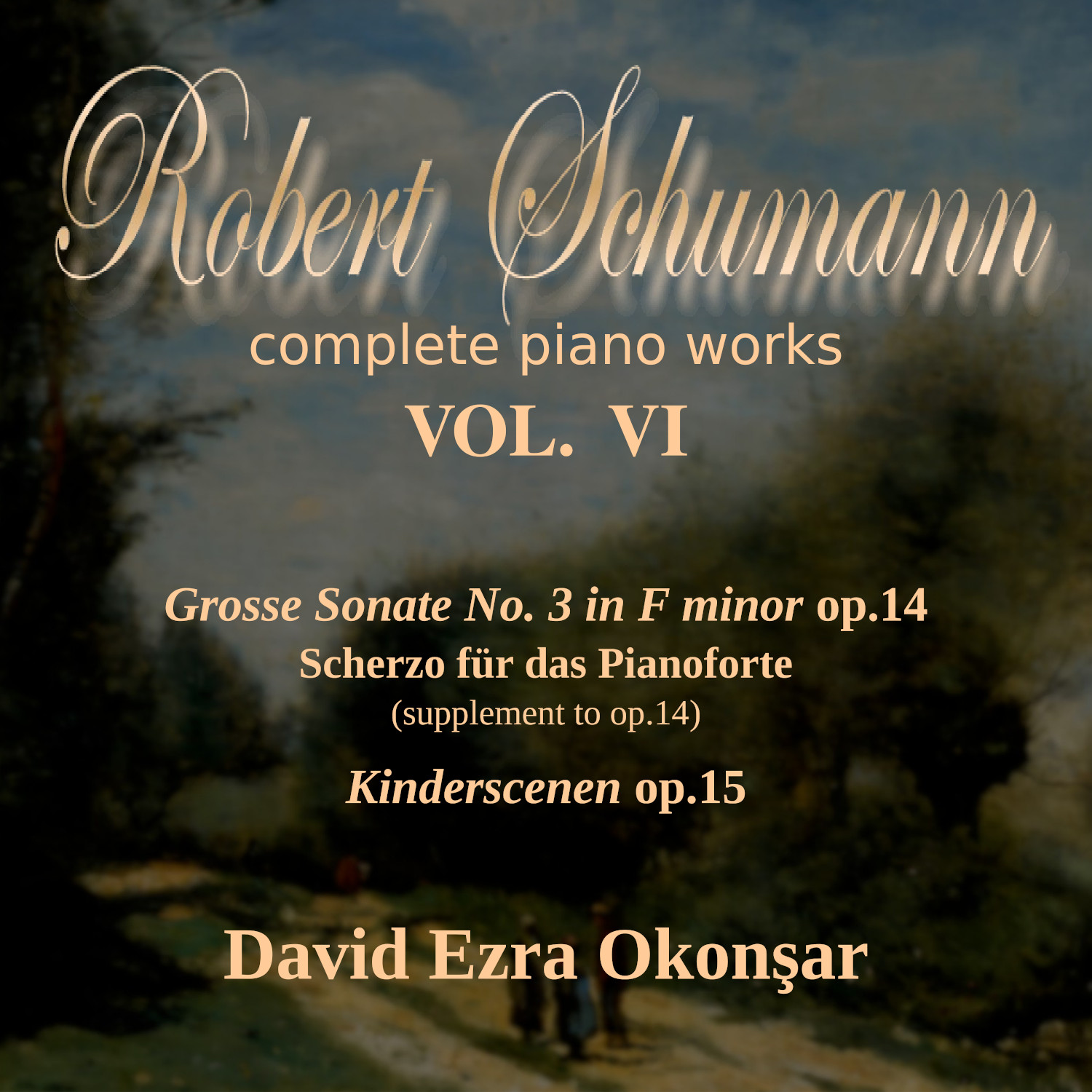



|
Robert Schumann
(1810-1856) Complete Works For The Piano
From Phantasiestücke, op.12 (1837) to Kinderscenen, op.15 (1838) Vol. 5 - 6, Two CD's sold separately Composed in 1837, the Phantasiestücke, op. 12, series is chronologically placed between the Fantaisie in C major, opus 17 from the previous year and the Davidsbündlertänze, opus 6, of the same year. This shows how the opus numbers do not follow any chronological ordinance. The present series of recording do however, keep with the opus numbers classification for easier tracking. The title Phantasiestücke is borrowed from E. T. A. Hoffman, who made a reputation with his Pièces de Fantaisie à la manière de Callot. Jacques Callot (1592 - 1635) was a baroque printmaker and draftsman from the Duchy of Lorraine. He is an important person in the development of the old master print. He made more than 1,400 etchings that chronicled the life of his period, featuring soldiers, clowns, drunkards, Gypsies, beggars, as well as court life. The name Kreisler (who will inspire one of Schumann's greatest pianistic works, the Kreisleriana) appears first in that same series by Hoffman. Phantasieren, in German also means to improvise. Worth noting as well: the Phantasiestücke is, together with Scènes d'enfants, op.15 Kinderscenen (1838), the only collection of pieces where each one has a title of its own. Études symphoniques, op. 13, started in 1834, is an opus magnum finished only on September 1835. Schumann did several major edits on each aspect of the work, even the title changed several times. From Variations pathétiques to Études de caractére orchestral and finally, for the first publication in 1837 it was titled as we know it today. The second publication of 1852 takes the title Études en forme de variations and finally the posthumous publication of 1857 settles with the Études symphoniques. The reason for which Schumann removed the five admirable variations could be that, with their dreamy textures those variations may have broken, in the composer's conception of the piece, the uninterrupted vigorous impetus from start to finish. However, they are included in the present recording. As their insertion place in the set is unknown and with the desire to keep with Schumann's original succession of the variations, these additional variations are placed after the main series. One of Schumann's lesser known and lesser played pieces is the Grand Sonata No. 3 in F minor ("Concerto without Orchestra") op. 14, yet Liszt admired it and wrote an enthusiastic article on this huge Sonata. While the pianistic écriture is extremely elaborated and virtuoso, the harmonic language is most audacious and full of startling dissonances and modulations. Same extreme refinement and elaboration is also present in the rhythms and syncopated canons and polyphonies. Composed more or less simultaneously with the other sonatas, it was originally planned as a sonata in five movements with two Scherzos (!). The publisher, Tobis Haslinger, found it so difficult and lengthy that Schumann had to rework on it, shrinking to three movements. In 1853, Schumann published it a second time, reworked the first movement and put the second scherzo as a second movement. The work, now in four movements was published as Troisiéme Grande Sonate, still with opus number 14, because the Sonate en sol mineur opus 22 was already published back in 1838. The second movement, a series of variations on a theme by Clara Schumann is the heart of the entire work and probably the first finished movement. Before Mussorgski, Bizet, Fauré, Debussy or Ravel, Schumann has been the first composer to address children's universe with Kinderscenen, op. 15 (1838). He was also among the first composer to successfully accomplish the challenging task of creating monothematic miniatures, following in this way the Bagatelles by Beethoven and Moments musicaux by Schubert. It is startling to see that those delightful pieces were composed almost simultaneously with the darkest and tumultuous ones of Kreisleriana. Unlike the Album pour la jeunesse opus 68, composed ten years later, the Kinderscenen is not intended for children hands. The composer mentioned that saying: "those 13 little 'things' were created by a big child, as a remembrance for those who grew up". |
|||||||||||||||||||
| |
|||||||||||||||||||
|





